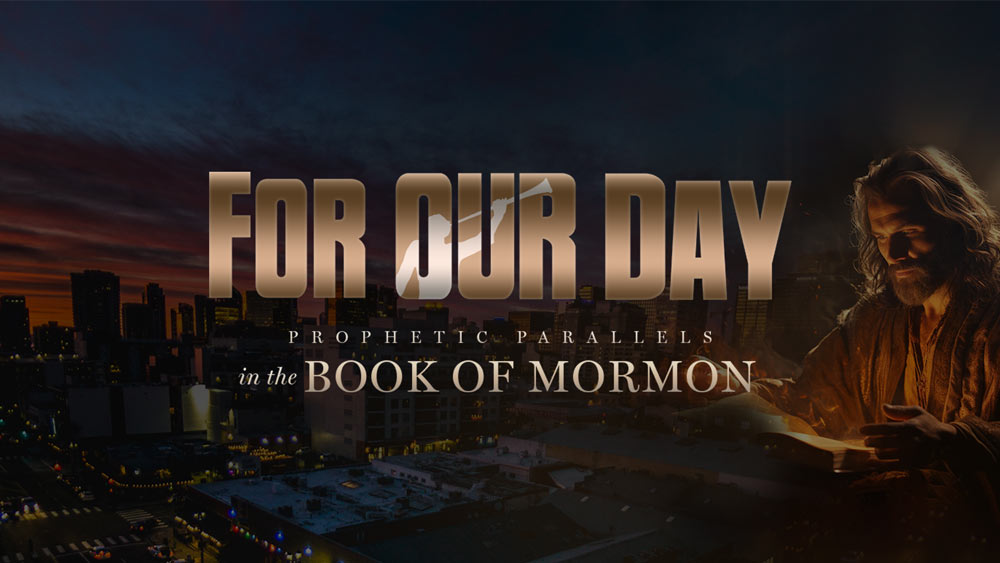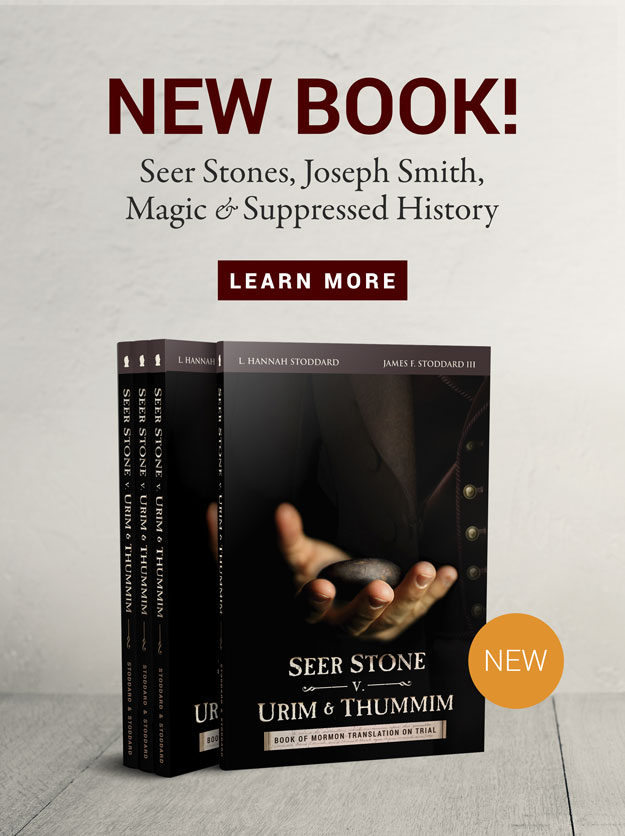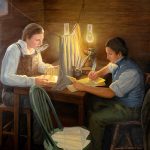Joseph Fielding McConkie (Professor of Ancient Scripture, BYU)
Craig J. Ostler (Assistant Professor of Church History and Doctrine, BYU)
- Published in the book, Revelations of the Restoration: A Commentary on the Doctrine and Covenants and Other Modern Revelations (Salt Lake City, UT: Deseret Book, 2000), pp. 89-98
- Republished from – http://emp.byui.edu/satterfieldb/Rel121/Process%20of%20Translating%20the%20BofM.pdf
- Republished from The Translation Process of the Book of Mormon Debunking Some Myths – http://scottwoodward.org/bookofmormon_translationprocess_debunkingmyths.html
Explanations as to how the Book of Mormon was translated have become the source of considerable speculation and misinformation. There appears to be little interest on the part of some writers to distinguish between what might be called historical prattle and competent testimony. For instance, scripture, statements by the Prophet himself, and the collaborative testimony of Oliver Cowdery the only firsthand sources we have on the matter are not, among some, accorded the same attention or credence as things said by secondhand witnesses who in thought and spirit were clearly out of harmony with the Prophet and the Church.
The matter of how the Book of Mormon was translated has been of considerable interest and discussion virtually from the time the book became public. This is illustrated in an exchange that took place between the Prophet and his brother Hyrum in a conference of the Church held 25 October 1831. On that occasion Hyrum said “that he thought best that the information of the coming forth of the book of Mormon be related by Joseph himself to the Elders present that all might know for themselves.” In response, Joseph Smith said that “it was not intended to tell the world all the particulars of the coming forth of the book of Mormon, & also said that it was not expedient for him to relate these things &c” (Cannon and Cook, Far West Record, 23).
Yet, it was not intended that we be entirely ignorant of the process of translation; otherwise, the revelation recorded in Doctrine and Covenants 9 would not have been included in a compilation of revelations intended for the eyes of the entire world. There are principles involved here of which every faithful Latter- day Saint ought to be a competent witness. There are also counterfeit notions about how the Book of Mormon was translated that enhance neither our understanding of how revelation is received nor our appreciation for the labor and faith involved so that we might have the Book of Mormon. Perhaps the matter can be treated most directly in a question and answer format. We will proceed in that manner.
Question: Why was Joseph Smith so reluctant to disclose details relative to the process of translation?
Answer: Because of its sacred nature. It is an “awful responsibility,” Joseph Smith said, “to write in the name of the Lord” (History of the Church, 1:226). Nor would we suppose it a small thing to be entrusted with a seeric device such as the Urim and Thummim. Just as the instrument itself was not to be held up to the gaze of the world, neither was the process by which it functioned. It seems more than coincidence that one of the first things translated by Joseph Smith after Oliver Cowdery became his scribe was the story of King Limhi asking Ammon if he could translate the records in his possession. Ammon responded that he could not, but he knew one who could. Ammon then explained, “For he has wherewith that he can look, and translate all records that are of ancient date; and it is a gift from God. And the things are called interpreters, and no man can look in them except he be commanded, lest he should look for that he ought not and he should perish. And whosoever is commanded to look in them, the same is called seer” (Mosiah 8:13).
The earliest known description of the process of translating the Book of Mormon is found in an article titled “History of the Mormonites,” published 9 June 1831, in Kirtland, Ohio. The writer, Josiah Jones, claims as his source the first Latter-day Saint missionaries to that territory Elders Cowdery, Pratt, Whitmer, and Peterson, from whom he learned that the book was translated by “looking into a stone or two stones, when put into a dark place, which stones he said were found in the box with the plates. They affirmed while [Joseph] looked through the stone spectacles another sat by and wrote what he told them, and thus the book was written. . . .
“A few days after these men appeared again, a few of us went to see them and Cowdery was requested to state how the plates were found, which he did. He stated that Smith looked onto or through the transparent stones to translate what was on the plates. I then asked him if he had ever looked through the stones to see what he could see in them; his reply was that he was not permitted to look into them. I asked him who debarred him from looking into them; he remained sometime in silence, then said that he had so much confidence in his friend Smith, who told him that he must not look into them, that he did not presume to do so lest he should tempt God and be struck dead” (Allen, “Historian’s Corner,” 308).
Though the article fails to acknowledge Oliver’s frustrating experience in attempting to translate, it does emphasize the feeling of sacredness that was associated with the use of the Urim and Thummim. Similarly, in another early article, Martin Harris was recorded as having said that Joseph had been directed “not to let any mortal being examine them [the interpreters], under no less penalty than instant death” (“Golden Bible,” 3).
Oliver was twice cautioned not to trifle with sacred things, having reference to the seeric aids that would be used in translation. “Do not ask,” he was warned, “for that which you ought not” (D&C 8:10; see 6:12). And again, Joseph Smith was told that “if they [meaning the world] will not believe my words, they would not believe you, my servant Joseph, if it were possible that you should show them all these things which I have committed unto you” (D&C 5:7).
A testimony of the Book of Mormon must of necessity embrace the understanding that it came as a “gift” of God, by the “power of God.” It is both the foundation upon which the modern Church is to rest and a miracle. To suppose that in its origin the Book of Mormon is less than a miracle is to attempt to build the house of one’s understanding upon something other than the foundation upon which the Lord placed it. It is not expected that miracles be explained.
Question: Did Joseph Smith say anything about the process of translation?
Answer: Yes. Joseph affirmed that he “translated from the plates,” and that he used the Urim and Thummim to do so. After the loss of the 116 pages by Martin Harris, both the plates and the Urim and Thummim were taken from him. Without the Urim and Thummim he could not translate. During this period Joseph made a short visit to his parents in Manchester, New York, and then returned again to Pennsylvania. “Immediately after my return home,” he recounted, “I was walking out a little distance, when, behold, the former heavenly messenger appeared and handed to me the Urim and Thummim again for it had been taken from me in consequence of my having wearied the Lord in asking for the privilege of letting Martin Harris take the writings, which he lost by transgression and I inquired of the Lord through it, and obtained the following [section 3]” (Smith, History of the Church, 1:21-22).
“After I had obtained the above revelation,” the Prophet continued, “both the plates and the Urim and Thummim were taken from me again; but in a few days they were returned to me, when I inquired of the Lord, and the Lord said thus unto me:
“Now, behold, I say unto you, that because you delivered up those writings which you had power given unto you to translate by the means of the Urim and Thummim, into the hands of a wicked man, you have lost them. And you also lost your gift at the same time, and your mind became darkened” (Smith, History of the Church, 1:23-24).
In the Wentworth Letter, the Prophet wrote: “With the records was found a curious instrument, which the ancients called “Urim and Thummim,” which consisted of two transparent stones set in the rim of a bow fastened to a breast plate. Through the medium of the Urim and Thummim I translated the record by the gift and power of God” (History of the Church, 4:537).
Question: What was the testimony of Oliver Cowdery on the matter?
Answer: In the October 1834 Messenger and Advocate [the Church newspaper in Kirtland, Ohio], Oliver Cowdery wrote: “These were days never to be forgotten to sit under the sound of a voice dictated by the inspiration of heaven, awakened the utmost gratitude of this bosom! Day after day I continued, uninterrupted, to write from his mouth, as he translated, with the Urim and Thummim, or, as the Nephites would have said, ‘Interpreters,’ the history or record called ‘The book of Mormon'” (Messenger and Advocate, 1:14).
The testimony borne by Oliver Cowdery upon his return to the Church was as follows: “Friends and Brethren: My name is Cowdery, Oliver Cowdery. In the early history of this Church, I stood identified with her, and one in her councils. True it is that the gifts and callings of God are without repentance; not because I was better than the rest of mankind was I called, to fulfill the purposes of God. He called me to a high and holy calling. I wrote with my own pen, the entire Book of Mormon (save a few pages) as it fell from the lips of the Prophet Joseph Smith, as he translated it by the gift and power of God, by means of the Urim and Thummim, or, as it is called by the book, ‘holy interpreters.’ I beheld with my eyes, and handled with my hands, the gold plates from which it was translated. I also saw with my eyes and handled with my hands the ‘holy interpreters'” (as cited in Smith, Restoration of All Things, 113).
Question: What should we know about the process of translation?
Answer: Certainly each member of the Church should have a meaningful understanding of that which the Lord has revealed to us on the matter. Our query then becomes, to what revelation do we turn? The answer is Doctrine and Covenants 9, in which we learn that Oliver Cowdery commenced to translate and then lost his courage and could not continue (vv. 5, 11).
“You must study it out in your mind,” the Lord told him, “then [that is after having arrived at your own best determination as to what the proper meaning is] you must ask me if it be right, and if it is right I will cause that your bosom shall burn within you; therefore, you shall feel that it is right. But if it be not right you shall have no such feelings, but you shall have a stupor of thought that shall cause you to forget the thing which is wrong; therefore, you cannot write that which is sacred save it be given you from me” (D&C 9:8-9).
In this context let us give at least brief consideration to the preparation that Joseph Smith made in order to have the sense and feel of this ancient record he was translating. First, it would be well to observe that he had received considerable tutoring from Moroni and other prophets from the Book of Mormon. In the Wentworth Letter Joseph Smith tells us that Moroni told him about the original inhabitants of this country and gave him “a sketch of their origin, progress, civilization, laws, governments, of their righteousness and iniquity, and the blessings of God being finally withdrawn from them as a people” (History of the Church, 4:537). Illustrating the understanding that Joseph
obtained of these things long before he began the labor of translation, his mother tells us how “every evening we gathered our children together and gave our time up to the discussion of those things which he instructed to us. I think that we presented the most peculiar aspect of any family that ever lived upon the earth, all seated in a circle, father, mother, sons, and daughters, listening in breathless anxiety to the religious teachings of a boy eighteen years of age who had never read the Bible through by course in his life. For Joseph was less inclined to the study of books than any child we had, but much more given to reflection and deep study.
“We were convinced that God was about to bring to light something that we might stay our minds upon, something that would give us a more perfect knowledge of the plan of salvation and the redemption of the human family than anything which had been taught us heretofore, and we rejoiced in it with exceeding great joy. The sweetest union and happiness pervaded our house. No jar nor discord disturbed our peace, and tranquility reigned in our midst.
“In the course of our evening conversations, Joseph gave us some of the most amusing recitals which could be imagined. He would describe the ancient inhabitants of this continent, their dress, their manner of traveling, the animals which they rode, the cities that they built, and the structure of their buildings with every particular, their mode of warfare, and their religious worship as specifically as though he had spent his life with them. It will be recollected by the reader that all that I mentioned and much more took place within the compass of one short year” (Smith, History of Joseph Smith, 1996, 111-12).
In this respect the testimony of Lorenzo Brown about the preparation the Prophet made for his translation of the Bible may be instructive. He records the Prophet as saying: “After I got through translating the Book of Mormon, I took up the Bible to read with the Urim and Thummim. I read the first chapter of Genesis and I saw the things as they were done. I turned over the next and the next, and the whole passed before me like a grand panorama; and so on chapter after chapter until I read the whole of it. I saw it all!” (as cited in Matthews, Plainer Translation, 25).
The kind of knowledge thus suggested seems to have been requisite to the labor of translation. For Joseph to properly render the sense of the characters recorded on the plates entrusted to him, he had to both know and feel what stood behind them. Perhaps the point is best illustrated with the Bible, for there seems to be no end of Bible translations. Why, we would ask, is the labor of Bible translation never done? Because, we are told, that as our knowledge of ancient civilizations their laws, governments, cultures, and languages increases so does our ability to give meaningful and accurate translations to that which they wrote. As it is with the manuscripts from which the Bible comes, so it is with the characters recorded on the plates of gold from which Joseph Smith translated.
Question: In addition to statements of the Prophet, the text of Doctrine and Covenants 9, and the testimony of Oliver Cowdery, who else has described the process by which the Book of Mormon was translated?
Answer: Perhaps prime among their number would be David Whitmer.
Question: What light does he shed on the matter?
Answer: Precious little. The testimony of David Whitmer, which is laid forth below, clearly contradicts the principles established by the Lord in this revelation. It is also at odds with the testimonies of both Joseph Smith and Oliver Cowdery. In our judgment, Mr. Whitmer is not a reliable source on this matter. We are entirely respectful of and grateful for the testimony to which he appended his name as one of the three witnesses of the truthfulness of the Book of Mormon and its divine origin. That, however, does not make him a competent witness to the process of translation. We too, like countless others, are competent witnesses of the truthfulness of the Book of Mormon. Our knowledge of how it was translated, however, is limited to that which has come through the channels ordained by the Lord for that purpose. As to David Whitmer’s explanation, it should be remembered that he never looked into the Urim and Thummim nor translated anything. His testimony of how the Book of Mormon was transltated is hearsay.
Spanning a period of twenty years (1869-1888), some seventy recorded testimonies about the coming forth of the Book of Mormon claim David Whitmer as their source. Though there are a number of inconsistencies in these accounts, David Whitmer was repeatedly reported to have said that after the loss of the 116 pages, the Lord took both the plates and the Urim and Thummim from the Prophet, never to be returned. In their stead, David Whitmer maintained, the Prophet used an
oval-shaped, chocolate-colored seer stone slightly larger than an egg. Thus, everything we have in the Book of Mormon, according to Mr. Whitmer, was translated by placing the chocolate-colored stone in a hat into which Joseph would bury his head so as to close out the light. While doing so he could see “an oblong piece of parchment, on which the hieroglyphics would appear,” and below the ancient writing, the translation would be given in English. Joseph would then read this to Oliver Cowdery, who in turn would write it. If he did so correctly, the characters and the interpretation would disappear and be replaced by other characters with their interpretation (Cook, David Whitmer Interviews, 115, 157-58).
Such an explanation is, in our judgment, simply fiction created for the purpose of demeaning Joseph Smith and to undermine the validity of the revelations he received after translating the Book of Mormon. We invite the reader to consider the following:
First, for more than fifty years David Whitmer forthrightly rejected Joseph Smith, declaring him to be a fallen prophet. Though he never denied his testimony of the Book of Mormon, he rejected virtually everything else associated with the ministry of Joseph Smith and the restoration of the gospel. His rejection included both the Aaronic and Melchizedek Priesthoods, which were restored during the time the Book of Mormon was being translated and, of course, the revelations which would eventually constitute the Doctrine and Covenants.
Second, according to David Whitmer’s account of how the Book of Mormon was translated, Joseph Smith was the instrument of transmission, while translation rested solely with the Lord. This is simply a reflection of the notion of divine dictation, which holds that every word of scripture comes from God himself. If David Whitmer’s account is to be accepted, revelation also includes spelling and punctuation. This notion is at odds with the explanation found in Doctrine and Covenants 8 and 9, which details how revelation comes. In this respect, Richard Anderson observed that Whitmer “after decades of reflection outside of the Church, concluded that no modification could possibly be made in any revelation. This highly rigid view of these revelations matched his highly rigid view of the origin of the Book of Mormon” (“By the Gift and Power of God,” 84). By contrast Brigham Young observed, “Should the Lord Almighty send an angel to re-write the Bible, it would in many places be very different from what it now is. And I will even venture to say that if the Book of Mormon were now to be re-written, in many instances it would materially differ from the present translation” (Journal of Discourses, 9:311).
David Whitmer repeatedly said that if a word was misspelled, the translator would not be able to go on until it had been corrected. This hardly allows for the 3,913 changes that have been made between the first edition of the Book of Mormon and the edition presently in use.
Third, if the process of translation was simply a matter of reading from a seer stone in a hat, surely Oliver Cowdery could do that as well, if not better, than Joseph Smith. After all, Oliver was a schoolteacher. How then do we account for Oliver’s inability to translate? Further, regarding the use of a hat in translation, Joseph’s brother William Smith explained that the Prophet used the Urim and Thummim attached to the breastplate by a rod that held the seer stones set in the rims of a bow before his eyes. “The instrument caused a strain on Joseph’s eyes, and he sometimes resorted to covering his eyes with a hat to exclude the light in part” (Smith, Rod of Iron 1, 3 [February 1924]: 7).
Fourth, Joseph Smith repeatedly testified to having both the plates and the Urim and Thummim returned to him. He further testified that he translated from the plates by the use of the Urim and Thummim.
Fifth, David Whitmer gave inconsistent accounts of the instrument used to translate. Thomas Wood Smith, in a published response about an interview he had with David Whitmer, who told him that Joseph Smith used the Urim and Thummim in translating the Book of Mormon, wrote, “When I first read Mr. Traughber’s paper in the Herald of November 15th, I thought that I would not notice his attack at all, as I supposed that I was believed by the Church to be fair and truthful in my statements of other men’s views, when I have occasion to use them, and I shall make this reply only: That unless my interview with David Whitmer in January, 1876, was only a dream, or that I failed to understand plain English, I believed then, and since, and now, that he said that Joseph possessed, and used the Urim and Thummim in the translation of the inscriptions referred to, and I remember of being much pleased with that statement, as I had heard of the ‘Seer stone’ being used. And unless I dreamed the interview, or very soon after failed to recollect the occasion, he described the form and size of the said Urim and Thummim. The nearest approach to a retraction of my testimony as given . . . publicly in many places from the stand from January, 1876, till now, is, that unless I altogether misunderstood ‘Father Whitmer’ on this point, he said the translation was done by the aid of the Urim and Thummim. If he says he did not intend to convey such an impression to my mind, then I say I regret that I misunderstood him, and unintentionally have misrepresented him. But that I understood him as represented by me frequently I still affirm” (as cited in Cook, David Whitmer Interviews, 56).
Finally, the testimony of David Whitmer simply does not accord with the divine pattern. If Joseph Smith translated everything that is now in the Book of Mormon without using the gold plates, we are left to wonder why the plates were necessary in the first place. It will be remembered that possession of the plates placed the Smith family in considerable danger, causing them a host of difficulties. If the plates were not part of the translation process, this would not have been the case. It also leaves us wondering why the Lord directed the writers of the Book of Mormon to make a duplicate record of the plates of Lehi. This provisionwhich compensated for the loss of the 116 pages would have served no purpose either. Further, we would be left to wonder why it was necessary for Moroni to instruct Joseph each year for four years before he was entrusted with the plates. We would also wonder why it was so important for Moroni to show the plates to the three witnesses, including David Whitmer. And why did the Lord have the Prophet show the plates to the eight witnesses? Why all this flap and fuss if the Prophet didn’t really have the plates and if they were not used in the process of translation? What David Whitmer is asking us to believe is that the Lord had Moroni seal up the plates and the means by which they were to be translated hundreds of years before they would come into Joseph Smith’s possession and then decided to have the Prophet use a seer stone found while digging a well so that none of these things would be necessary after all. Is this, we would ask, really a credible explanation of the way the heavens operate?
When asked how the labor of translation was accomplished, the Prophet declined to answer, saying, “It was not intended to tell the world all the particulars of the coming forth of the book of Mormon” (Cannon and Cook, Far West Record, 23). Surely we do not look to the world or the understanding of the world for an answer. We would expect to find that understanding only as we come to understand in greater measure the operations of the Spirit of revelation.
Bibliography
Allen, James B., ed., “The Historian’s Corner,” Brigham Young University Studies 12, no. 3 (1972): 306-11.
Anderson, Richard L. “‘By the Gift and Power of God.'” Ensign, September 1977, 79-85.
Cannon, Donald Q., and Lyndon W. Cook, eds. The Far West Record. Salt Lake City: Deseret Book, 1983.
Cook, Lyndon W. ed. David Whitmer Interviews: A Restoration Witness. Orem, Utah: Grandin Book, 1991.
“Golden Bible,” Painesville Telegraph, 22 September 1829.
Matthews, Robert J. “A Plainer Translation:” Joseph Smith’s Translation of the Bible, a History and Commentary. Provo, Utah: Brigham Young University Press, 1975.
Messenger and Advocate, Latter Day Saints’ (Kirtland, Ohio). 1834-37.
Smith, Joseph. History of The Church of Jesus Christ of Latter-day Saints. Edited by B. H. Roberts. 2d ed. rev. 7 vols. Salt Lake City: The Church of Jesus Christ of Latter- day Saints, 1932-51.
Smith, Joseph Fielding, The Restoration of All Things. Salt Lake City: Deseret Book, 1973.
Smith, William P. Interview by J. W. Peterson and W. S. Pender. The Rod of Iron 1, no. 3 (February 1924): 7.







